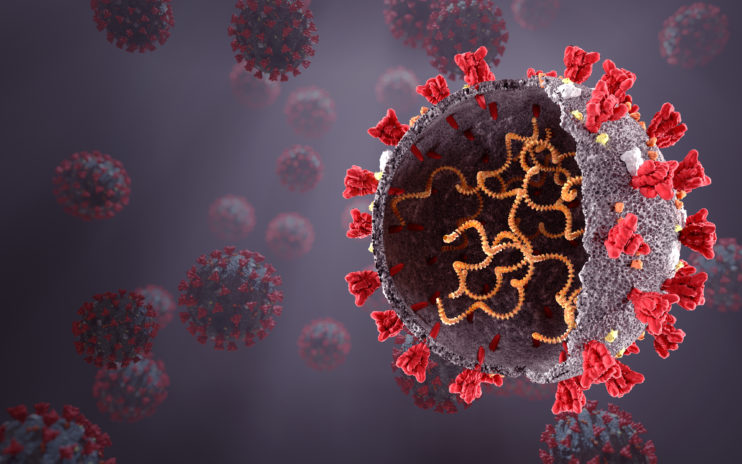What If . . . ? Convergence Strengthens the Case for Creation?
I just finished viewing the Disney+ animated Marvel series What If . . . ? Though this series has received mixed reviews, I really liked it.
The main character and series narrator is The Watcher. He’s a member of a powerful group of extraterrestrials who observe important events in the multiverse but have taken vows not to interfere. The Watcher describes the events of alternate timelines in the Marvel multiverse, noting that if even a single event transpired differently, the future would cascade into a radically different direction. Each episode asks, What if?
For example:
- What if Captain Carter took the super soldier injection instead of Steve Rogers, becoming the first Avenger?
- What if Killmonger saved Tony Stark?
- What if Ultron had won instead of the Avengers?
Ultimately, viewers of this Disney+ series are forced to confront the profound question: Are we merely part of the historically contingent unfolding of our universe? Or do purpose and destiny shape our lives?
Historical Contingency
Some evolutionary biologists hold the view that the central theme of Marvel’s What If . . . ? series also defines the evolutionary process. That is to say, the evolution of life on Earth has unfolded in a historically contingent manner.
One of the leading advocates for this idea was evolutionary biologist Stephen Jay Gould. In his book Wonderful Life, Gould presented the following metaphor to describe the evolutionary process of “replaying life’s tape.” If one were to push the rewind button, erase life’s history, and then let the tape run again, the results would be completely different each time. In other words, the evolutionary process should not repeat itself. And rarely should it arrive at the same endpoint.
For Gould, the basis of this metaphor is the idea that the evolutionary process consists of an extended sequence of unpredictable, chance events, just like the different timelines of the Marvel multiverse, and if any of these events were altered, it would send evolution down a different trajectory.
Gould based the concept of historical contingency on his understanding of the mechanisms that drive evolutionary change. Since the time of Gould’s original description of historical contingency, several studies have affirmed his view. (For descriptions of some representative studies, see the articles listed in the Resources section.) Researchers have experimentally shown that if, indeed, the evolutionary process describes life’s history, it must be historically contingent.
A Failed Prediction of the Evolutionary Paradigm
Given the concept of historical contingency, it seems unlikely that distinct evolutionary pathways would lead to identical or nearly identical outcomes. Yet, when viewed from an evolutionary standpoint, it appears as if repeated evolutionary outcomes are a common occurrence throughout life’s history. This phenomenon—referred to as convergence—is widespread. Evolutionary biologists Simon Conway Morris and George McGhee point out in their respective books, Life’s Solution and Convergent Evolution, that identical evolutionary outcomes are a characteristic feature of the biological realm. Scientists see these apparent repeated outcomes at the ecological, organismal, biochemical, and genetic levels.
In other words, biologists have made two contradictory observations within the evolutionary framework: (1) evolutionary processes appear to be historically contingent, and (2) evolutionary convergence is widespread. And as time goes on, life scientists continue to uncover more and more examples of convergence.
One More Example of Convergence
Recent work by a large team of scientific collaborators has uncovered another remarkable example of convergence. The team demonstrated that—when viewed from an evolutionary perspective—certain aquatic adaptations in whales and hippos emerged independently, on two separate occasions, at two different points in life’s history.1
Evolutionary trees based on DNA sequence data (molecular phylogenies) indicate that whales (cetaceans) and hippos (Hippopotamidae) are sister groups, meaning that they must have shared a common ancestor. Additionally, based on DNA sequence comparisons, whales group with even-toed mammals, the artiodactyls.
As an interesting side note: evolutionary relationships inferred from anatomical data paint a different evolutionary story. Morphological phylogenies (evolutionary trees constructed from anatomical features) exclude whales from the artiodactyls and group hippos with pigs and peccaries.
As aquatic mammals, whales and hippos share many morphological and behavioral features that include:
- Hairless bodies
- Absence of sebaceous glands
- No scrotal testis
- Underwater parturition
- Underwater detection of sound directionality
From an evolutionary standpoint, considering the historically contingent nature of the evolutionary process, the most parsimonious explanation has these shared features arising in the common ancestor of whales and hippos.
To confirm this expectation, the research team focused on genes involved in skin development and skin biology. To their surprise, they discovered that the aquatic adaptations of whales and hippos resulted from the inactivation of the same 10 genes. They also learned that these genes were inactivated in the two groups independently and at different times in their evolutionary history. From an evolutionary vantage point, the inactivation of these genes occurred 16 million years earlier in cetaceans than in hippos. Mark Springer, the lead author of the study, said “None of the inactivating mutations that would have suggested a common aquatic ancestry are shared between these two lineages.”2
A single gene typically affects more than one biological trait and each trait arises from the integrated expression of multiple genes organized into networks. The gene loss in whales and hippos must have occurred in a highly coordinated manner. For this reason, it’s astounding to think that the coordinated loss of the same 10 genes occurred independently in both whales and hippos.
It’s equally astounding that the convergence of the whale and hippo skin adaptations is manifested at both the anatomical and genetic levels. This finding is unexpected. If convergence is observed at the anatomical level, we wouldn’t necessarily expect to see it driven by the loss of the same set of genes, given the historically contingent nature of the evolutionary process.
While a single example of convergence—as remarkable as it might seem—doesn’t invalidate an evolutionary explanation for life’s origin, the large number of examples raise suspicions about the sufficiency of current ideas about evolution to fully explain life’s history.
Convergence and the Case for a Creator
Convergence fits awkwardly within the evolutionary framework, but it makes perfect sense if a Creator is responsible for life. Instead of convergent features emerging through repeated evolutionary outcomes, they could be understood as reflecting the work of a divine Mind. The repeated origins of biological features stem from the repeated creations by an intelligent Agent who employed a common set of solutions to address a common set of problems facing disparate organisms.
Convergence and Structuralism
Alternatively, some biologists, such as Simon Conway Morris, interpret the widespread occurrence of convergence as revealing something unexpected about the evolutionary process. Instead of being historically contingent with evolutionary outcomes influenced by natural selection operating on a sequence of chance events, they view evolutionary outcomes as constrained and fundamentally prescribed by the laws of nature. This model is called structuralism.
Conway Morris puts it this way: “It is now widely thought that the history of life is little more than a contingent muddle punctuated by disastrous mass extinctions that in spelling doom for one group so open the doors of accidents of history . . . Yet, what we know of evolution suggests the exact reverse: convergence is ubiquitous and the constraints of life make the emergence of various biological properties very probable, if not inevitable.”3
In other words, physical forces supersede natural selection altogether, shaping the development of organisms. Some structuralists go so far as to claim that the basic forms of the natural world—”the Types”—are immanent in nature and determined by a set of special natural biological laws, the so-called “laws of form.”
This view of the evolutionary process has interesting implications. One of the most provocative is that it reintroduces teleology into biology. When viewed as a historically contingent process, evolution is unguided and undirected. It has no purpose. It has no end goal. On the other hand, if structuralism is valid—as suggested by the widespread occurrence of convergence—then the evolutionary process proceeds to predetermined ends and a teleology perfuses life’s evolutionary history.
Along these lines, it’s eerie to think that the laws of nature that dictate biological forms also yield forms that are just-right, precisely the ones needed to support the diversity of life on Earth. In this framework, biological convergence reflects the inevitabilities of the evolutionary process—outcomes that were predetermined before the evolutionary process began. One interpretation of these facts is that a divine Mind rigged the universe in such a way that life is not only inevitable, but also the life-forms intended by the Creator are the only ones that could ever emerge from evolutionary processes.
All Roads Lead to a Creator
While I don’t necessarily subscribe to structuralism—instead, I see convergence as arising through the Creator’s direct action—I do find the idea intriguing. The pervasive occurrences of convergence throughout biology lead to a singular conclusion: a Mind is behind it all. And whether one adopts a creation model/design approach or an evolutionary approach to biology, the necessary role a Creator has played in life’s history is unavoidable—no “ifs, ands, or buts” about it.
Resources
- “Repeatable Evolution or Repeated Creation?” by Fazale Rana (article)
- “Convergence: Evidence for a Single Creator?” by Fazale Rana (article)
- “Like Fish Out of Water: Why I’m Skeptical of the Evolutionary Paradigm” by Fazale Rana (article)
- “Origins of Monogamy Cause Evolutionary Paradigm Breakup” by Fazale Rana (article)
- “Believing Impossible Things: Convergent Origins of Functional Junk DNA Sequences” by Fazale Rana (article)
- “Is Junk DNA Evidence for Biological Evolution?” by Fazale Rana (article)
- “Historical Contingency and the Improbability of Protein Evolution, Part 1” by Fazale Rana (article)
- “Historical Contingency and the Improbability of Protein Evolution, Part 2” by Fazale Rana (article)
- “Inability to Repeat the Past Dooms Evolution” by Fazale Rana (article)
- “Dollo’s Law: At Home with a Creation Model, Reprised” by Fazale Rana (article)
Endnotes
- Mark S. Springer et al., “Genomic and Anatomical Comparisons of Skin Support Independent Adaptation to Life in Water by Cetaceans and Hippos,” Current Biology 31, no. 10 (May 24, 2021): P2124–2139.E3, doi:10.1016/j.cub.2021.02.057.
- American Museum of Natural History, “Skin Deep: Aquatic Skin Adaptations of Whales and Hippos Evolved Independently,” ScienceDaily (April 1, 2021), https://www.sciencedaily.com/releases/2021/04/210401112857.htm.
- Simon Conway Morris, Life’s Solution: Inevitable Humans in a Lonely Universe (New York: Cambridge University Press, 2003), 283.






